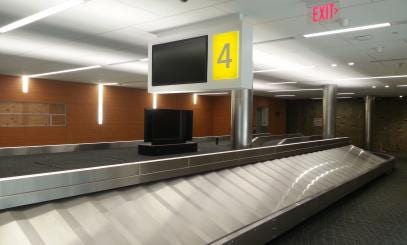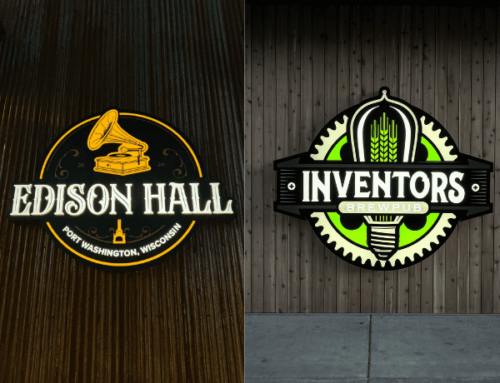New Sign For Airport
Guiding passengers safely and efficiently to their gate is paramount to the folks that manage General Mitchell International Airport (GMIA) in Milwaukee, Wisconsin. In 2014, more than 6 million passengers made their way through the airport. Many of them first time visitors to the airport and unfamiliar with the layout as well as the location of key areas.
High volume environments like municipal airports call for a sign package encompassing numerous types of signs, including way-finding and identification signs, interior and exterior signs as well as illuminated and non-illuminated signs. And nothing but the latest technology and effective design is expected.
A COMPLETE PACKAGE
Sign Effectz, Inc. built a complete and diverse sign package as a critical component of GMIA’s effort to upgrade to a cleaner, more efficient facility. The package included five different types of Non-lit Interior ADA Signs, four types of Interior Illuminated signs, five types of Exterior Illuminated Signs and six different Regulatory Signs (such as stop signs and pedestrian crossing signs).
Quantities varied greatly as well. For example: we fabricated 18 overhead directional signs for the baggage claim area including 5 baggage return carousel signs (one per carousel). The sign features the carousel number and incorporates a television monitor that identifies the flights of the baggage on the carousel. We didn’t supply the monitor but built to specs that called for it.
Each baggage carousel has its own entrance with new signage that identifies the carousel number and the airlines served by that particular carousel. This is important to the facility upgrade because in the past, the baggage claim area lacked precision in how its entrances were identified, which could lead to confusion. There is now consistency between carousel and doorway, making it easier for passengers being picked up to communicate to their driver their exact location.
We fabricated the light box that fit into the granite cabinet supplied by the general contractor. It consists of an LED light system covered by yellow polycarbonate. It’s all in a day’s work for us to coordinate our manufacturing so it matches that of other contractors. Our project team has deep experience making 300+ pages of building plans, addenda and specs come together!
THE BIG CHALLENGE
The biggest challenge was managing the changing schedules and the openings and closings of sections of the airport that were a necessary part of the project. One reason the anticipated length of the project was roughly a year and a half was that the airport had to remain functioning while the upgrades were being made. Therefore, the project was performed in stages. A minimum of two functioning carousels were kept open at all times.
This drew upon our expert level coordination, creating and placing temporary signs that would get passengers to their destination during the temporary closures. For the frequent business travelers, accuracy in the temporary signs was crucial. We worked in conjunction with the architectural firm, Enberg Anderson. Expertise on both sides provided the necessary flexibility to successfully manage the challenges and adapt to the continual updates to the project schedule.
SLIM DESIGN
For a clean, sleek look, the way-finding signs are very narrow. We built double-faced illuminated signs that are 3” deep, using a string of special LED lights called Sloan Poster Box Slim at the top and the bottom of the sign’s interior.
This reduced length from 60’ to 20’ of LED, which lead to cost savings, energy efficiency and maintenance reductions. One of our core competencies is hunting to find the ideal illumination source for slim signs. It pays off by eliminating illumination inconsistencies, what’s known as “hot-spots” on the sign.
The faces on many of the signs had to be interchangeable. This enables airport management to take one sign face and move it to another in a different part of the airport. Why…airlines move concourses on a regular basis.
CONCLUSION
Many people consider way-finding signs just part of the landscape. However, a busy airport can be a difficult place to navigate for folks that don’t fly often or come from outside of Milwaukee.
Way-finding signage has to assume that visitors don’t know where they’re going. They answer many time-critical questions for passengers: where do I park? Where do I get my luggage? Where can I pick up a taxi? Where are the rest rooms? Where can I get food and beverages? Where can I check the status of my flight?
Hand in hand with an image upgrade, it was time for GMIA to address the traffic concerns (passenger and vehicular). The key: efficiently move visitors from one stage to another.
It’s now much brighter, fresher and cleaner. It’s much more organized. There is a logical flow.
We realize a lot was on the line for everyone that is involved in making the airport run smoothly. And we are thrilled to have had the opportunity to build and ship the signage as well as provide guidance on critical parts of the installation.










